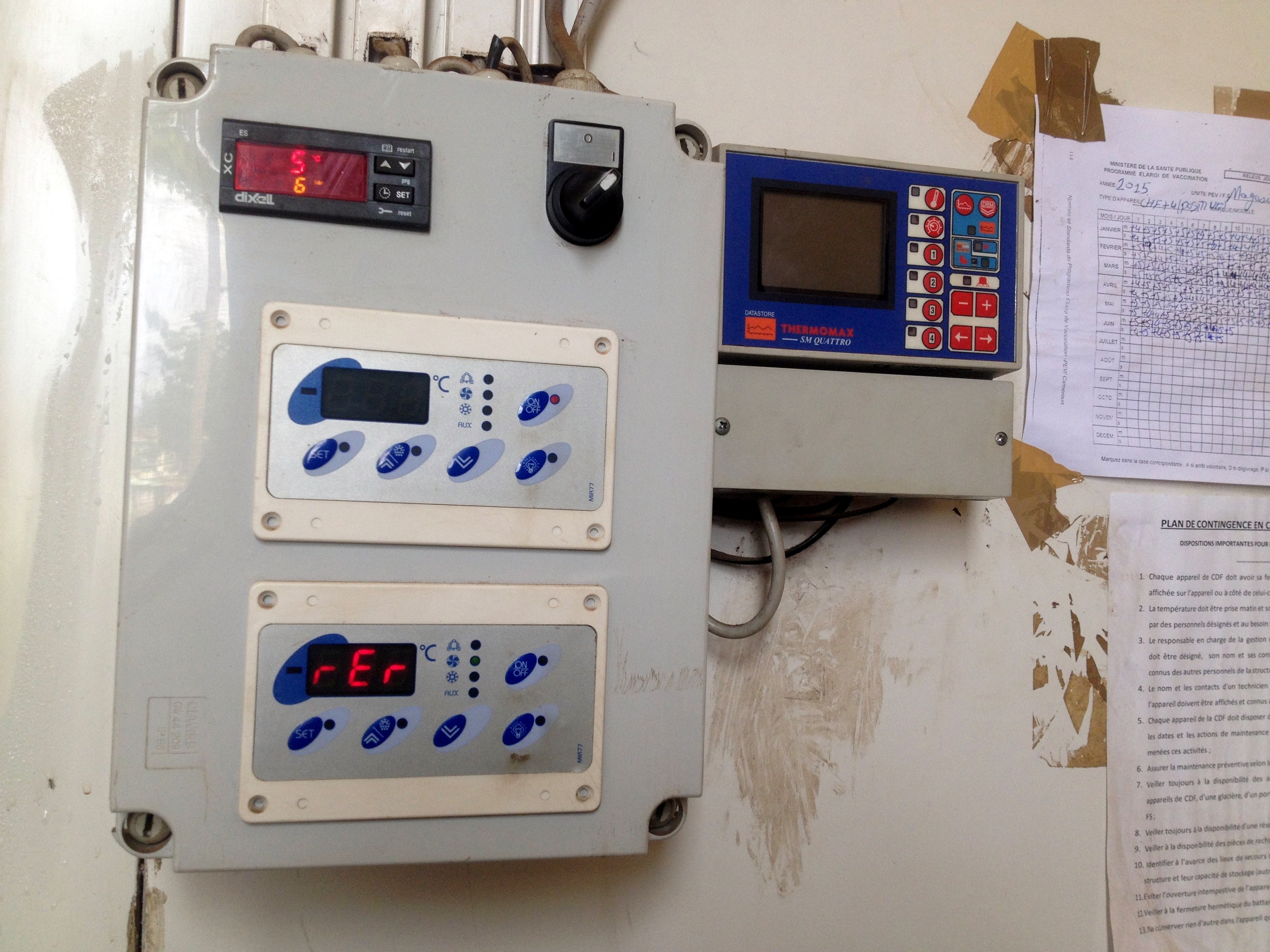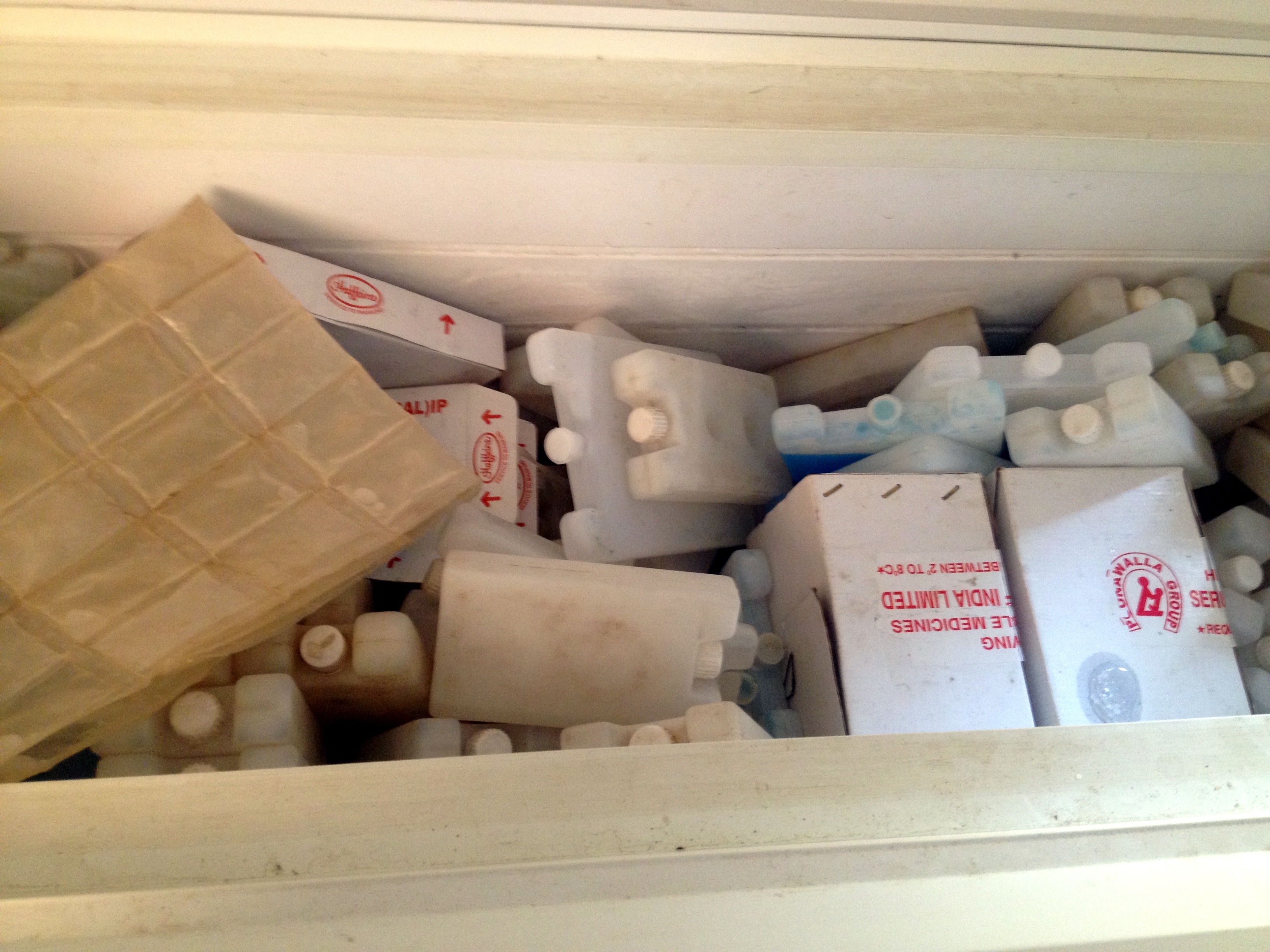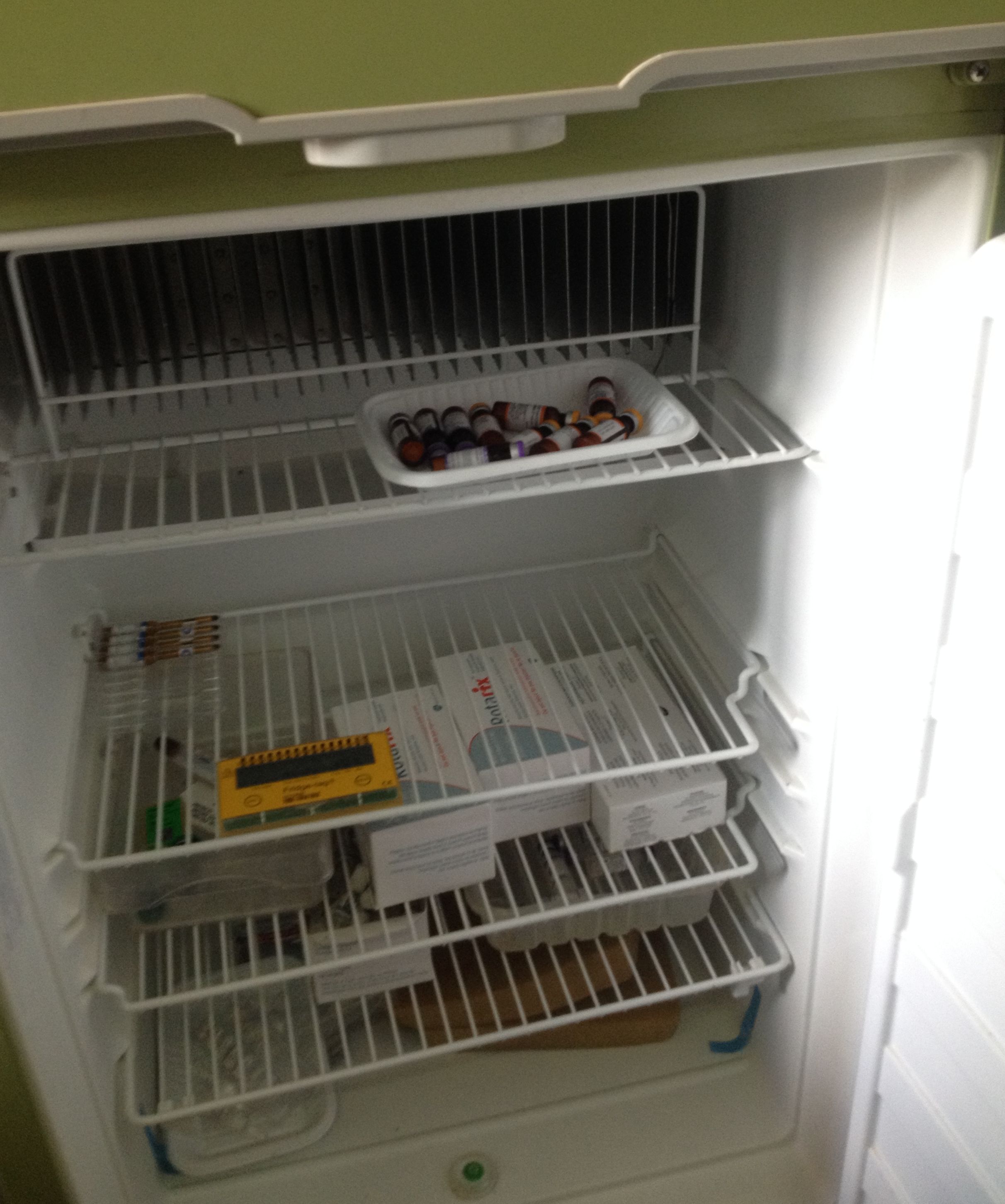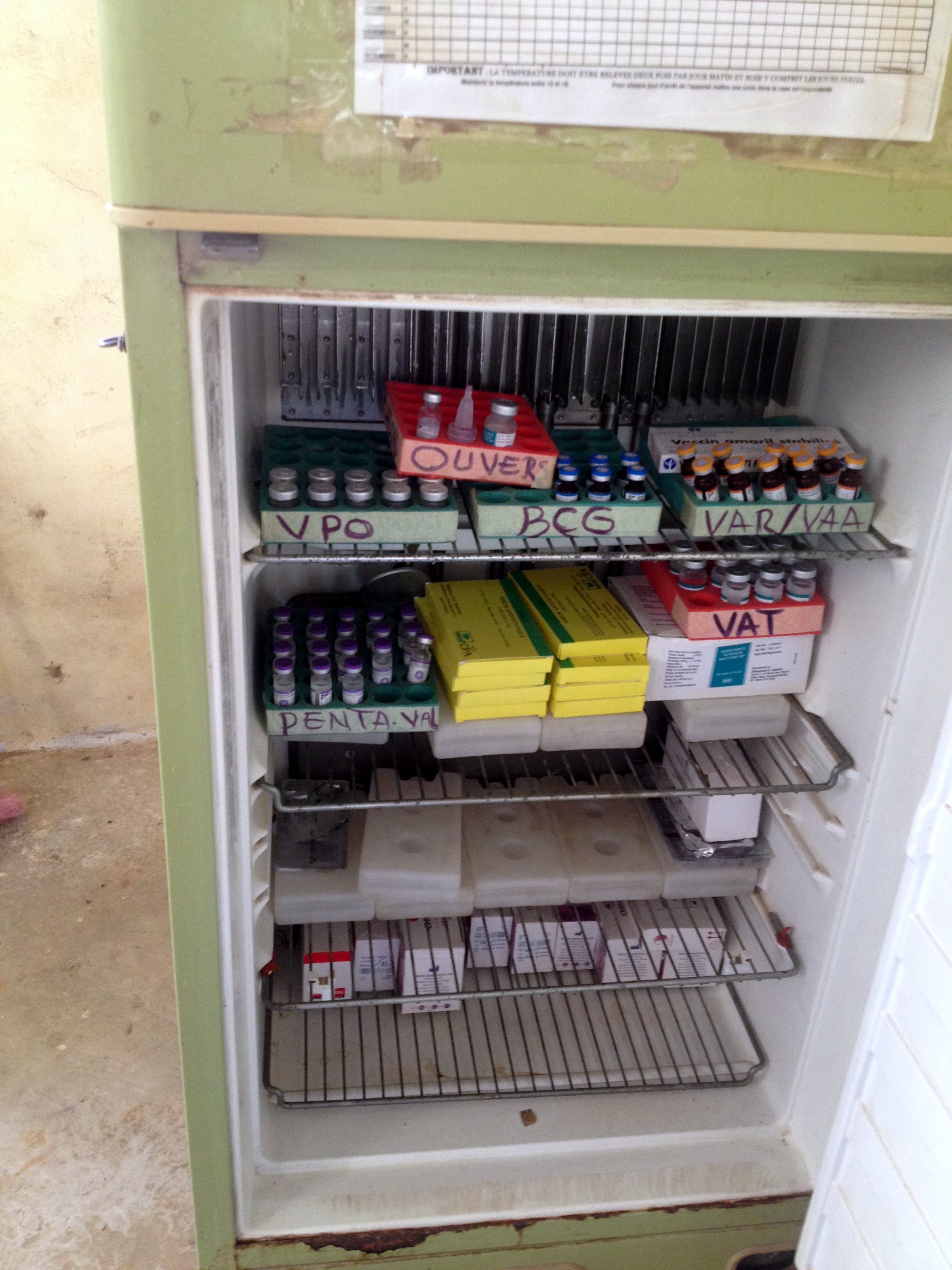When managing the system the goal is two-fold:
- Making sure the equipment (Temperature monitoring equipment and communication equipment) is kept in good working conditions
- Making sure the people are performing their tasks in accordance with good working standards.
and the 2 are interlinked, since people are maintaining the equipment.
Maintain the equipment and manage the risks: sustained operation of the equipment is a condition for the system ‘s continuity
Photo: Temperature monitoring unit, out of order
For 30DTRs the main challenge is the limited battery operating life of approx. 2 year, which means that already after 18 months a replacement order should be placed. Furthermore experience shows that a substantial quantity of spare devices is necessary to cover the units used for training, units misplaced and units where the battery has stopped early probably due to wrong handling (device could have been frozen or the read button pushed too many times).
For RTM the challenge is the replacement or recharging of SIM card and keeping track of which SIM cards is used for which equipment, the regular maintenance of the device and for wired devices, checking of the wires (as animals can damage or disconnect the wires).
Recurrent budget line should be established from the onset for this type of recurring costs.
Maintain focus: making sure that people react better at all levels
After the initial focus for the pilot or the beginning of the project, attention to temperature issues will probably relapse and move towards other exiting projects. The challenge is to retain the momentum on temperature monitoring. This is particularly challenging, because temperature monitoring involves many routine tasks, that might be considered trivial, if the importance of a sustained effort in this area is not fully understood.
The long-term is what will bring a measure of the efficiency of a temperature monitoring system by including clear responsibilities and accountabilities in national policies for “institutionalisation”. All job descriptions and SOPs should be clear and reviewed regularly. There should not be any doubt as to where the responsibilities of health workers start and where they end and when the responsibilities switch to the managers.
Supportive supervision
For 30DTR, as part of the post-installation review process, having the districts visit all of the sites to check the readings after one to two months is strongly advisable. This would most likely uncover valuable new issues, and would highlight the value of this system to the ministry of health and districts. This would corroborate whether the devices are being used correctly and enable evidence-based readjustments and further training. It includes testing the tasks being performed against the SOPs and enables an early verification that the SOPs fully and exactly cover actual practices within the system.
To ensure that reporting is done accurately, persons filling out reports should be familiar with how to read the devices as well as how to respond so that complete reports are provided. Data should be verified and validated.
Temperature monitoring must be included in the routine checks to be performed during each supervisory visit. Examples of checklists are included in the resources.
|
Temperature monitoring EVM indicators can also be used to regularly measure performance:
|
Necessary control and pinpointing the responsibility where it belongs creates confidence in the whole system.
Information about heat and freeze alarms must be immediately acted upon by the health worker when they discover the alarms. Their responsibility is to perform the necessary checks on the equipment to find out the cause of the alarm and remedy the situation. However in some situations remediation is not within their capabilities or responsibilities. They might not be able to address or fix the problem on their own and they will need support from technical staff or from their manager to get external technical help. This chain of potential events and responsibilities/accountabilities should be clearly stated in the SOPs and in roles and responsibilities tables (an examples of a roles and responsibilities table can be found in the resources).
Health workers will be more motivated to do their bit if they know that it makes a difference and that, once they have done what they were supposed to do and they have escalated the issue, the responsibility is passed to their supervisor and they cannot be blamed for what happens next. It is important that they feel supported by their supervisors. When they bring an issue to their supervisor's attention, they should feel confident that something will be done about it.
Supporting supervision helps staff perform their job better and should give them the training and support they need. However, some cases of malpractice cannot be blamed on lack of training or equipment performance but are the result of negligence. As shown in the pictures below from a district storage facility, we can find relatively new solar refrigerator that is already showing failures (exterior thermometer not working) and very old Sibir still working after 30 years. This clearly shows that with the same budget, the same equipment, the same environment, some clinics and districts do a fantastic job whereas some others are dirty, messy and clearly show lack of care. Good performance should be rewarded through promotions and insufficient performance should be addressed.
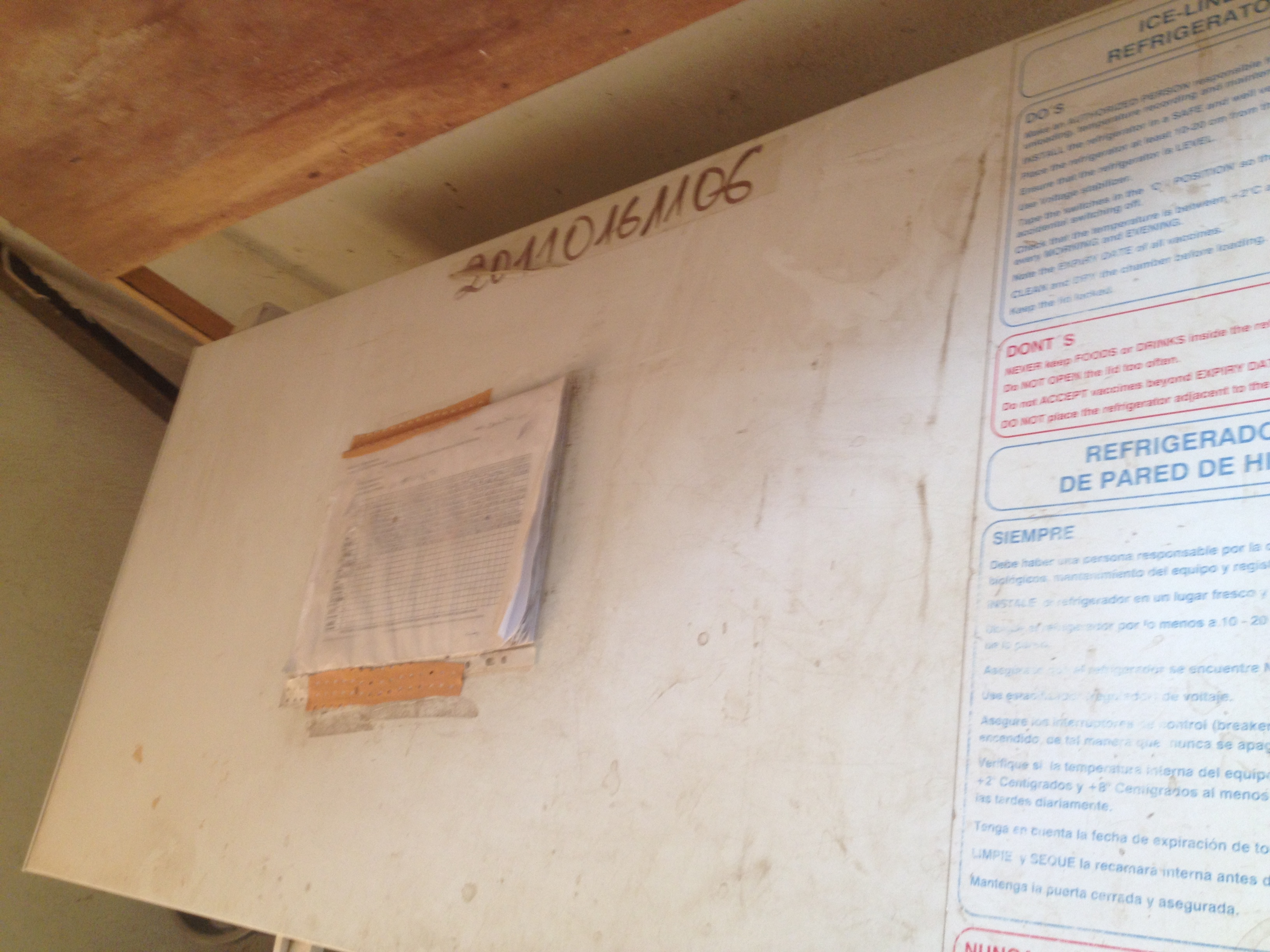
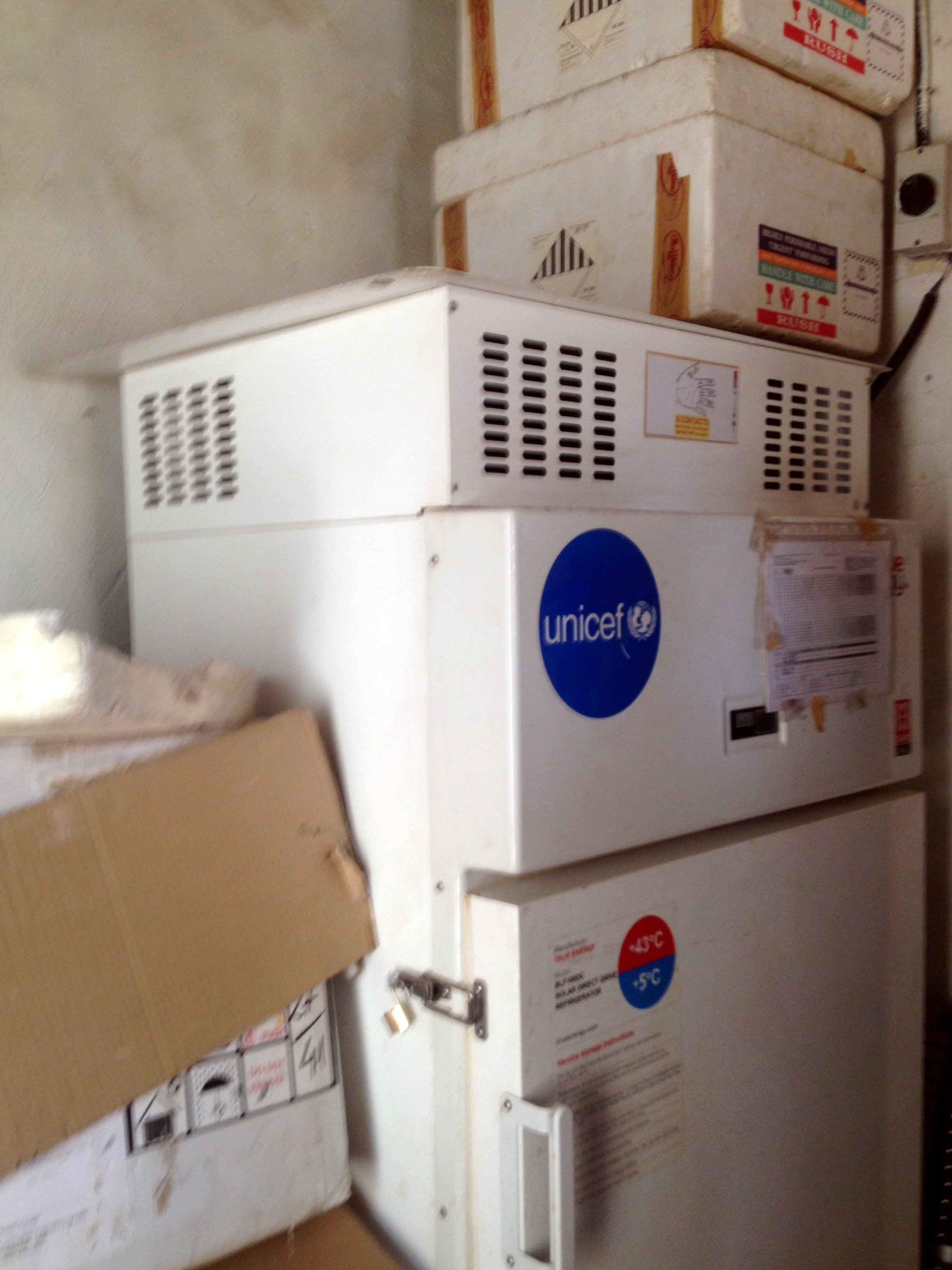
The 3 pictures on the left show lack of care whereas the 2 pictures on the right show equipment well cared for. Same conditions, different attitudes.
Due diligence
A process, SOP should be in place to address critical emergency situations (e.g. power cuts for one week) and contingency plans should be shared with all stakeholders and rehearsed regularly. If the Central Pharmacy is supposed to provide some emergency storage, the person responsible at the Central Pharmacy must be aware of this and his/her contacts must be shared.
Related resources
Resources not available.
This document describes how to plan and conduct a supervisory visit.
This document is a sample of the list of checks about temperature monitoring supervisors should perform during a supervisory visit to a health facility.
This document is a sample of feedback form for supportive supervision supervisory visits.
This document is an example of a table to define and map roles and responsibilities within Temperature Monitoring.
Link: http://www.technet-21.org/library/2466-tm-roles-and-responsibilities-table

